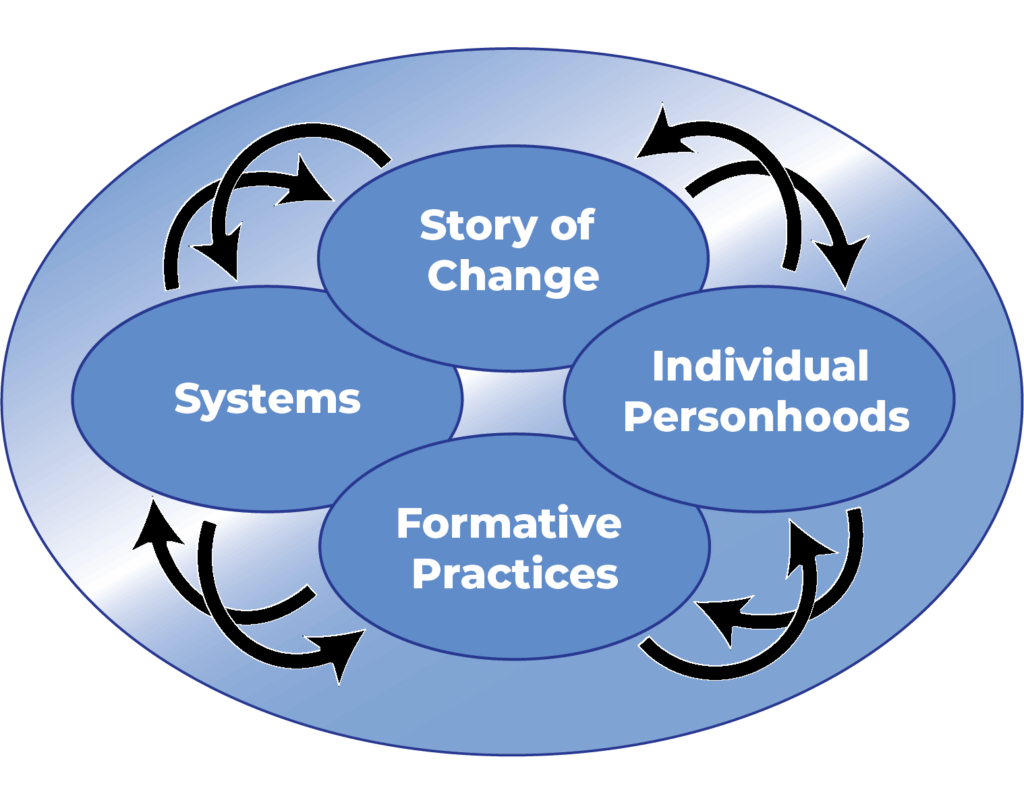Racial Injustice and Our False Gods
Warning: this article contains descriptions of violence that may be disturbing to some readers.
Recent incidents of violence against black men and women in the United States are just the latest installments of over 400 years of America’s controlling, abusing, and profiting from the bodies of black image-bearers. In addition to overt acts of racial injustice such as enslavement, segregation, lynching, and police brutality, a host of less obvious policies and practices” e.g. redlining, housing covenants, education funding, hiring protocols, etc.” have perpetuated social and economic injustices along racial lines for centuries.
As we discussed in our previous article, the church cannot sit idly by. As the very embodiment of Jesus Christ, the church must continue His work of declaring and demonstrating the comprehensive justice, healing, and wholeness of His kingdom. Yes, that kingdom is not fully here, but it’s not just “not yet” either. Indeed, 2000 years ago the new creation burst forth out of the very dust of the old one, when Christ emerged from the tomb with a transformed, resurrection body ”the first fruits of the new creation”(1 Cor. 15:20-23).
But How Should We Act? What Should We Do?
We certainly don’t have all the answers. Not even close. But the church is both called and gifted to see and to do things that the world is not always able to see and to do. Through God’s inerrant and authoritative word “the Bible” and through the indwelling power of the Holy Spirit, the church is created to be a unique blessing to the world. This reality should never lead us to arrogance, for we were once enemies of God “enemies!” and it is through His grace alone that we have been rescued from our rebelliousness (Rom. 5:10; Eph. 2:8-9). Joyful humility is the appropriate response to His astonishing gift.
In that posture of humility, let’s delve into the questions we posed at the start of this series: How did we get here? What are the underlying dynamics? How can we truly address the root causes of the issues that plague our land?
As we discuss in our latest book, Becoming Whole: Why the Opposite of Poverty isn’t the American Dream, three foundational biblical truths provide a helpful starting point for understanding both individuals and cultures:
- Human beings are always worshiping some god(s);
- Human beings are transformed into the image of whatever god(s) they worship;
- Human beings then make culture in that same image.
By “worship” here we don’t just mean what we do on Sunday morning. Rather, worship refers to the way we orient our entire lives. We worship whatever thing has the biggest pull on our hearts, shaping our thoughts and actions throughout the week.
How do these three foundational truths actually work in the real world?1 Supernatural forces are in play, as only God can transform fallen human beings into His image. But scholars throughout the ages have observed that there are some regular ways in which people go from worshiping a god, to being transformed into the image of that god, and to then shaping culture in that same image.2 These ancient truths have recently been rediscovered by theologians, philosophers, and social scientists,3 shedding considerable light on the process.4
How Cultures and People Are Formed
To understand how this works, let’s consider the case of Joe, a life-long resident of the Westside community, who walks into your church asking for financial assistance. Like all communities, Westside is shaped by what philosophers call its “metanarrative,” its overarching account of the nature of God, of human beings, and of the world. This metanarrative profoundly shapes the individuals of Westside and the community as a whole through three channels:5
- Story of Change: The community’s understanding, which may be explicit or implicit, of the goal of life and how that goal can be achieved.
- Formative Practices: The community encourages its members to engage in behaviors that are believed to help the community achieve its goals. These practices are called “formative” because they shape the people who engage in them, making them different kinds of people than they were before. Those who master these practices are lauded by the community as “heroes” for helping the community to achieve its goals.
- Environmental and Social Systems: Over time, the community adopts both formal and informal institutions that perpetuate its story of change across time in ways that shape future generations. Formal institutions include laws, schools, banks, and churches, while informal institutions include neighborhood associations, knitting clubs, language, and cultural norms.
The community’s story of change, formative practices, and environmental and social systems create a daily rhythm that shapes each community member to be in line with achieving the community’s goals.
An analogy might help. Think of a basketball team as a community. The team’s “story of change” is that the goal is to win the game by scoring the most points. The players engage in “formative practices” to help the team achieve its goals: they practice passing, shooting, and dribbling to improve their ability to help the team to achieve its goals. And the coach creates a “system” to reinforce the team’s goals: those who play well are praised and rewarded with more playing time; and those who play poorly are relegated to the far end of the bench. As the players repeatedly engage in “formative practices” that are narrated by the team’s “story” and reinforced by the “system,” they change; they become better players; they become “winners” they have taken on the image of the god the team is serving. In fact, the best players have been so transformed that they automatically and unconsciously do what the team needs them to do to win the game. When there are two seconds left on the clock and the score is tied, the team can pass the ball to its best player, and without even thinking, this player is able to drive to the basket and score the winning basket. The player has been transformed into the image of the god the community is worshiping.
Similarly, Joe does not walk into your church as a blank slate. To some degree he embodies the god his community is serving. And your church is not a blank slate either. Will your church respond in a way that reflects worship of the One True God?
The illustration below summarizes this process, highlighting how the elements of the community create a “formative feedback loop,” a mutually reinforcing story of change, formative practices, systems, and individual personhoods that make particular communities what they are.6
The Natural Process of Individual and Cultural Formation

Adapted from Brian Fikkert & Michael Rhodes, “Homo Economicus vs. Homo Imago Dei”, Journal of Markets & Morality, Vol. 20, No. 1 (Spring 2017), 106.
What Do We Truly Worship?
In this light, if we want to understand what is really going on in our nation, we need to ask what god(s) our nation is worshipping:
- What sort of god entices a white policeman to grind his knee into the neck of a helpless black man, squeezing the very breath of life out of him?
- What sort of god urges men to pursue and kill a young black man jogging through their neighborhood?
- What sort of god lures a nation into systemically discriminating against Black Americans in housing, in education, and in employment for centuries?
And the questions shouldn’t stop there:
- What sort of god convinces a woman and her doctor that it is good to take the life of her unborn child?
- What sort of god entices businessmen to regularly visit hotel rooms during their lunch hours to exploit twelve-year old girls who are drugged and chained to the beds?
- What sort of god tells the CEOs of multinational corporations that it’s perfectly reasonable for them to earn hundreds of millions of dollars while the children who work in their factories earn less than a dollar per day?
Whoever this god is, he makes Baal, Ashteroth, and Moloch seem like minor-leaguers!
And lest we think we in the church are immune from this god’s influence, consider the following:
- This god has enslaved millions of us in pornography.
- This god has trapped many of us on a consume-earn-consume-earn treadmill that is running us ragged.
- This god has enticed us to choose lifestyles increasingly characterized by loneliness, resulting in an explosion of mental and physical health problems.
It may seem strange to focus on worship and idolatry to help us understand the underlying dynamics of racial tensions and other social maladies that are plaguing America. But this is exactly where none other than Martin Luther King Jr. would start. While King is best known for his nonviolent social action during the civil rights movement, this activism was deeply rooted in his theological understanding of the nature of God, of human beings, and of culture.
King kept a folder entitled “False Gods We Worship” that included notes, outlines, and some of his most famous sermons and speeches. In 1953, at the age of only 24, he preached a sermon series by the same title that opened with the following:
Certainly worship is as natural to man as the rising of the sun is to the cosmic order. Men always have worshipped and men always will worship. There is the ever present danger, however, that man will direct his worship drive into false channels. It is not so [much] disbelief as false belief that is the danger confronting religion. It is not so much downright atheism as strong, determined polytheism which impedes the progress of religion. The scripture furnishes numerous examples of this ever present tendency of man to substitute false gods for the One true God (Judges 2:12).
When we move from the pages of the Bible to the scene of the modern world, we find this same tendency present in even greater proportions. On every hand modern man has turned from the One true God of the universe to the worship of false gods round about him.7
To understand racism and the other social ills plaguing the United States, we need to understand the god(s) our nation is worshipping. We will look further at these gods and their impact on our culture in future posts. This examination should not be merely an intellectual exercise: we must actively repent and worship the One True God alone if real change is going to happen.
- This section is adapted from Brian Fikkert and Kelly M. Kapic, Becoming Whole: Why the Opposite of Poverty isn’t the American Dream (Chicago,IL: Moody Publishers, 2019), 55-57.
- See Aristotle’s Nicomachean Ethics, ca. 350 B.C.
- For an accessible introduction to these ideas written by a Christian philosopher, see James K.A. Smith, You Are What You Love: The Spiritual Power of Habit (Grand Rapids, MI: Brazos Press, 2016). For an example of recent empirical support for this model, see Jonathan Haidt and Craig Joseph, “Intuitive Ethics: How Innately Prepared Intuitions Generate Culturally Variable Virtues,” Dædalus (Fall 2014): 55-67.
- Alasdair C. MacIntyre, After Virtue: A Study in Moral Story, 3rd ed. (Notre Dame, IN: University of Notre Dame Press, 1981).
- Brian Fikkert and Michael Rhodes, “Homo Economicus versus Homo Imago Dei” Journal of Markets and Morality 20, No. 1 (Spring 2017): 105-106.
- Fikkert and Rhodes, 104.
- Martin Luther King, Jr., “The False God of Science” from the series False Gods We Worship, July 5, 1953. Accessed online at https://kinginstitute.stanford.edu/king-papers/documents/false-gods-we-worship.


